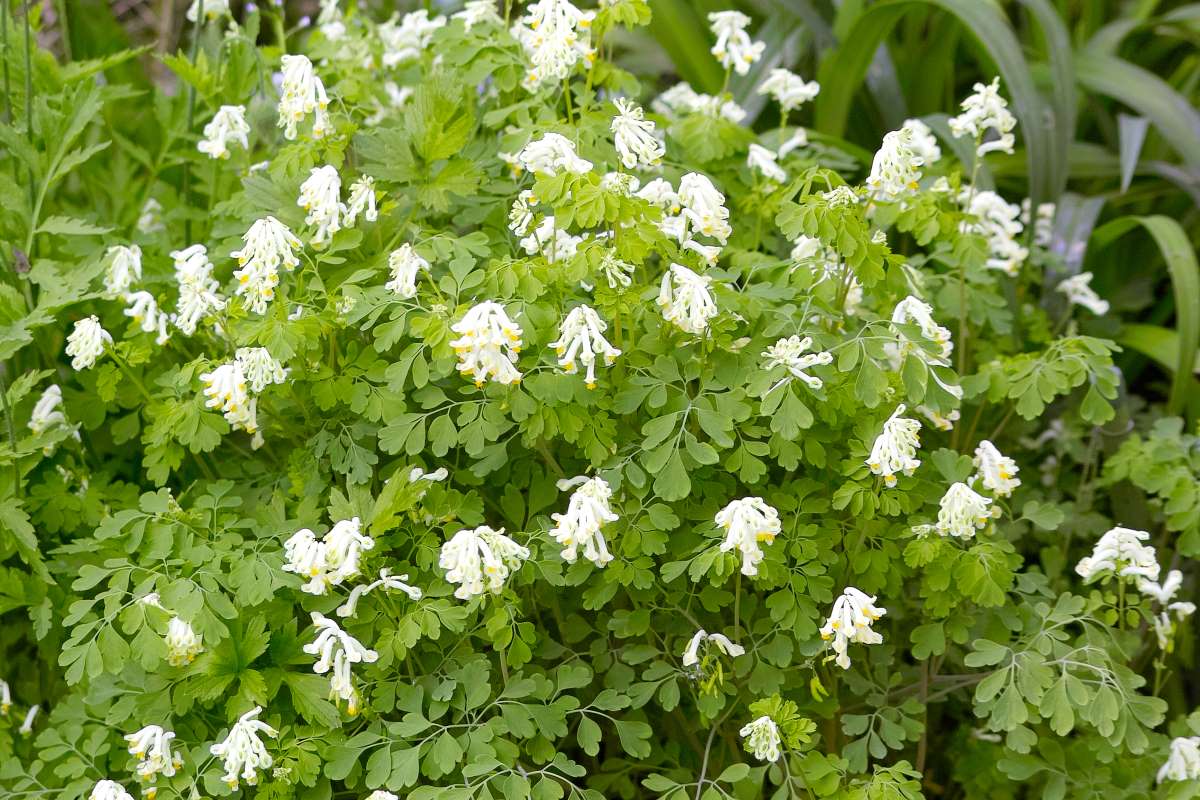Description
Corydalis – Pseudofumaria –
There are about 300 species of fibrous or fleshy rooted annuals and biennials, and tuberous or rhizomatous perennials, in this genus. Most are herbaceous, a few are evergreen. They occur in a range of habitats with many from woodland or rocky, mountain sites, mostly in North temperate regions, with the greatest concentration in Mountains of Eastern Asia. They produce opposite ot alternate stem leaves which are compound,, usually ternate to 3 ternate, sometimes pinnate to 3 pinnate, and sometimes triangular in outline. The leaflets are often finely divided, producing a fern like appearance. Tubular flowers are carried in mostly terminal, sometimes axillary racemes, usually above the foliage, each have 4 petals: the outer pair with a backward pointing spur, the inner pairs incurved to cover the stamens and style.
The sun loving species are suitable for a rock garden or alpine house, grow shade loving species in a rock or woodland garden, or as a underplanting in a shrub border. Some species need a periods of dry dormancy in summer and protection from excessive winter moisture, these are best grown in a bulb frame or alpine house.
Soil should be well drained but moisture retentive, rich in humus. Grow in full sun or partial shade and fertile, well drained soil. Often self seed freely
Resent excessive moisture.
Divide spring flowering species in autumn and summer flowering species in spring.
Prone to downy mildew, rust, aphids, spider mites, snails and slugs.
C. ochroleuca – This evergreen, fibrous rooted, clump forming perennial from Southeastern Europe grows 12″ tall and wide. It produces 2 or 3 pinnate, light green leaves, to 5″ long, with obovate leaflets. From late spring to summer it bears compact, axillary racemes of creamy white flowers, to 1 ½” long, with yellow throats and downward curing spurs.
Zones 6-8





